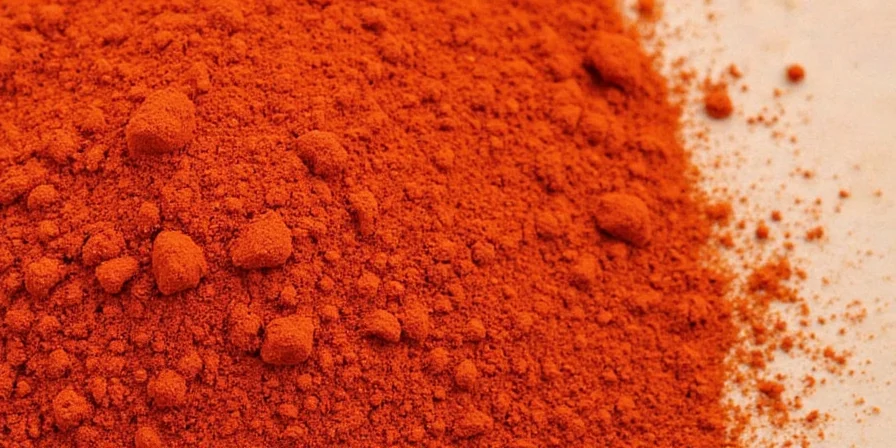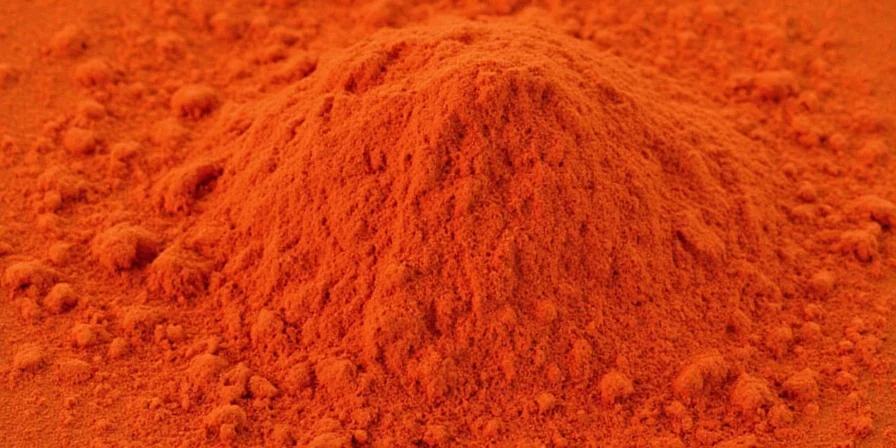Paprika Powder: The Secret Weapon in Global Kitchens

Have you ever looked at a recipe and wondered, “What exactly is paprika powder, and why does it seem to be the star of every dish from Hungarian goulash to Spanish paella?” If you're like most cooking enthusiasts, you might have stumbled across this vibrant red spice and scratched your head. But fear not! This blog is your culinary compass to unlocking the full potential of paprika powder — from storage to usage hacks that will have your kitchen smelling like a spice market in Budapest.
What Exactly Is Paprika Powder?
Before we dive into the nitty-gritty of storage and usage, let’s start with the basics. Paprika powder is a spice made from dried and ground peppers of the Capsicum annuum family, primarily from the Paprika plant. It is a staple in many cuisines around the world, especially in Central and Eastern Europe, the Middle East, and parts of the Americas.
There are several types of paprika powder, each with its own flavor profile and use:
- Smoked Paprika Powder: This variety is made from peppers that have been dried over wood fires, giving it a rich, smoky flavor. It's a key ingredient in dishes like Spanish chorizo and Hungarian paprikash.
- Sweet Paprika Powder: This is the mildest and sweetest type, ideal for adding color and mild heat to dishes without overpowering other flavors. It’s often used in sauces, soups, and marinades.
- Hot Paprika Powder: As the name suggests, this one packs more heat. It's used in spicy dishes and marinades that require a kick.
Choosing the Right Paprika Powder
When shopping for paprika powder, it's important to know what you're looking for in terms of flavor and heat. Here's a quick table to help you compare the different types:
| Type | Flavor | Heat Level | Best Used For |
|---|---|---|---|
| Smoked Paprika | Smoky, earthy, slightly sweet | Mild to medium | Soups, stews, chorizo, rubs |
| Sweet Paprika | Sweet, mild, slightly nutty | Very mild | Sauces, marinades, soups |
| Hot Paprika | Spicy, bold, smoky | Medium to hot | Spicy dishes, marinades, rubs |
Understanding the differences between these types will help you choose the right paprika for your recipe and elevate your cooking to the next level.
Storage Hacks for Paprika Powder: Keep It Fresh and Flavorful
Now that you know what paprika powder is, let's move on to the most crucial part of using it: storage. Like many spices, paprika can lose its potency and flavor if not stored properly. Here are some expert tips to keep your paprika powder fresh for months — if not years.
1. Use an Airtight Container
The first and most important rule of spice storage is to keep it in an airtight container. Exposure to air can cause paprika powder to oxidize and lose its vibrant color and flavor over time. Choose a glass jar with a tight-fitting lid or a plastic container with a sealable lid to protect your spice from moisture and air.
2. Store in a Cool, Dark Place
Heat and light are the enemies of spices. Paprika powder should be stored in a cool, dark place away from direct sunlight and sources of heat. Your kitchen cabinet is usually a good spot, but avoid placing it near the stove, oven, or dishwasher — these areas tend to be too hot and humid.
3. Avoid Moisture at All Costs
Moisture is the number one enemy of spices. If your paprika powder gets wet or exposed to humidity, it can clump together and become unusable. Make sure your storage container is completely dry before adding the powder, and avoid any spills or leaks.
4. Keep It Away from Strong Smells
Spices are highly absorbent and can easily pick up strong odors from other ingredients or cleaning products. Store your paprika powder away from garlic, onions, coffee, and other pungent items to preserve its natural flavor.
5. Don’t Store for Too Long
While paprika powder can last for up to two years if stored properly, it's best to use it within 6–12 months for optimal flavor. If you buy a large quantity, consider dividing it into smaller portions and storing them in separate containers to ensure freshness.
Usage Hacks: Get the Most Flavor Out of Your Paprika Powder
Now that you're storing your paprika powder like a pro, it's time to get creative in the kitchen. These usage hacks will help you maximize the flavor and versatility of this incredible spice.
1. Use It in Marinades
Paprika powder is a fantastic addition to marinades, especially when paired with olive oil, garlic, and herbs. It adds a subtle heat and depth of flavor that enhances the meat or vegetables you're marinating. Try mixing it with garlic and olive oil for a quick and easy marinade that works wonders on chicken, pork, or even vegetables.
2. Add It to Soups and Stews
Smoked paprika is a game-changer in soups and stews. It adds a rich, smoky depth that elevates the flavor of your dish. A pinch of smoked paprika in a tomato-based soup or a creamy potato stew can take the dish from good to extraordinary.
3. Use It in Baked Goods
Yes, you read that right — paprika powder can even be used in baked goods. A small amount of sweet paprika can add a warm, nutty flavor to breads, cakes, and even cookies. It's a great way to add a touch of international flair to your dessert recipes.
4. Make a Paprika Rub for Meats
For a quick and flavorful way to season your meats, try making a paprika rub. Mix smoked paprika with salt, pepper, garlic powder, and a bit of sugar for a balanced, smoky seasoning that works well on chicken, beef, or pork. Rub it on your meat before grilling, roasting, or pan-frying for a delicious, restaurant-quality result.
5. Use It in Sauces and Dips
Paprika powder is a versatile ingredient that can be used in a variety of sauces and dips. Add a teaspoon of sweet paprika to your favorite mayonnaise or sour cream for a quick and easy dip that's perfect for chips, vegetables, or sandwiches. It's also a great addition to pasta sauces, giving them a rich, slightly sweet flavor.
Common Mistakes to Avoid When Using Paprika Powder
Even the most experienced cooks can make mistakes when using paprika powder. Here are a few common pitfalls to avoid:
- Using too much: Paprika powder is potent, and a little goes a long way. Using too much can overpower other flavors in your dish. Start with a small amount and adjust to taste.
- Using the wrong type of paprika: As we discussed earlier, different types of paprika have different flavor profiles. Using sweet paprika in a spicy dish can be a disaster, and using hot paprika in a sweet dish can be overwhelming. Always match the type of paprika to the dish.
- Adding it too early: Paprika powder should be added toward the end of cooking to preserve its flavor. Adding it too early can cause it to burn or lose its potency.
Conclusion: Embrace the Power of Paprika Powder
Paprika powder is more than just a colorful spice — it's a powerhouse of flavor that can transform your cooking. Whether you're making a traditional Hungarian goulash or a modern fusion dish, paprika powder has the versatility and depth to elevate your recipes to new heights.
By following these storage and usage hacks, you can ensure that your paprika powder stays fresh and flavorful for months to come. So go ahead, experiment with different types, mix it into your favorite dishes, and let the flavors of the world come to your kitchen.
Remember, with a little knowledge and a lot of creativity, you can turn even the simplest ingredients into culinary masterpieces. Happy cooking!

Now that you're armed with all the tips and tricks you need, it's time to get into the kitchen and let the magic of paprika powder work its wonders. Whether you're a seasoned chef or a curious home cook, there's no better time to explore the world of spices — and paprika powder is a fantastic place to start.
So what are you waiting for? Grab that jar of paprika powder and start experimenting. Your taste buds — and your dinner guests — will thank you.










 浙公网安备
33010002000092号
浙公网安备
33010002000092号 浙B2-20120091-4
浙B2-20120091-4